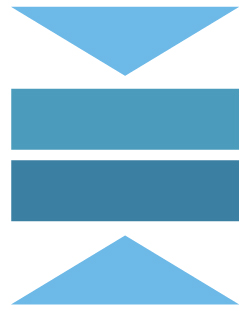In the last bit of our multi-part website rebuild series, we talk about what we consider to be one of the most important, but neglected aspects of websites, Content Strategy. Content is more important than any graphic elements or cool functionality. After all, the web is the new way to publish.
In the last bit of our multi-part website rebuild series, we talk about what we consider to be one of the most important, but neglected aspects of website builds: Content Strategy. Content is more important than any graphic elements or cool functionality. After all, the web is the new way to publish.
Content Strategy: The Real Bones to ANY WEBSITE
This is the most important part of our journey in creating a website. What is content strategy? It governs what we provide as a website. This means knowing what you’re going to post on the website and having a plan. If you don’t have a good content strategy your customers or Google won’t care to find out more.

To figure out our content strategy, we focused on what our clients and potential clients value in us. We looked for things that make us unique and worthwhile. Read about targeting the right audience in Part 1.
So, what is content strategy? There are many answers to this question.
Key(word) to a Good Content Strategy
Let’s first think about the keywords that you want to target. Think about what makes your business or website unique. What makes you stand out? What can you offer to people that no one else is offering?
This is where you figure out a phrase or keyword that define what you do. If you are a law firm in Edmonds, WA, you need to do keyword research for: Edmonds law firms. Using the Google keyword tool you can figure out how competitive your keyword is and whether it is worth chasing or not.
If the keyword is too competitive, there are ways in which we can use common long tail key phrases for your market. For example, instead of aiming for the general keywords “law firm”, you can be more specific/unique and use something like personal injury law edmonds. By being more specific, you’ll get less hits in general, but you’ll get a more specific hit tailored for your site. This is a win-win-win for your customers, you and Google.
Right Percentages of Content Types
We recently looked at a post from Portent about their 70/20/10 split for their contents that they recommend. You can take a look at their post here.

70% of the content should be relatively conservative and align with your core business/site goals.
20% of your content should play off of the 70% but be fun and target new audiences.
10% should be totally experimental and unexpected.
This way, you can keep doing what you’re good at and experiment at the right rate.
For us, the 70% is our tutorials/blog entries that teach/discuss web design and development related topics. This is directly related to our business and what we do on a daily basis.
Our 20% and 10% projects, like the Mix Face app, are in our experiments section. We build fun Javascript based toys that people can play with. The intent is to provide something fun that you can laugh at or smile with. So, how do you turn these thoughts into actionable measures?
Using your Keywords in your Content
Use the keywords you picked earlier in different parts of your page to increase your rankings. Below are good places to put your keywords:
- <title> element
- <h1> element
- <h2> and other H elements
- <strong><em><b><i> and other elements of emphasis
- Meta Description tags, but not the Meta Keywords
- Sporadically through your paragraphs and other elements in your article. Be honest about this one. Google Bot can read close to a human. Repeating words too many times can actually hurt you more than help you.
You don’t have to post the most interactive content nor do you have to provide the most badass infographic to win the content/SEO game. As long as you write something that your customers and Google value as something worthwhile, you have a chance! Infographics and fun pictures do help to keep people engaged; even a simple picture can do wonders!
Writing Well
Writing well is always important. This means that your writing has structure and engages your readers. Below is an example structure:
- Introduction with a thesis
- Support for your thesis
- A counter point
- A conclusion that verifies your thesis (including shooting down your counter points).

In addition to having good content structure in your entry, good grammar, spelling and sentence structure can make or break the readability of your content. If you rank well for your keyword, be sure to thank your English teachers/profs! (Thank you Mr. O’Brien, Ms. Wheeler, Mr. Lucas, and Mr. Burgess!)
In Conclusion
Understanding your audience and their likes/dislikes can help you figure out what keywords to use in your content. Provocative titles can work as long as your content reflects the title. Don’t lie, don’t cheat and don’t copy; you can always regurgitate or comment on another blog entry if you can’t think of something new. Know your audience, know what keeps you unique, and write well.
About Our Content Strategy
We offer tutorials on Joomla extensions that aren’t always well documented by the creators. We also write about issues/oddities we find in each software that people may have a hard time figuring out. In addition to all of this we create fun experiments that anyone with a good sense of humor can appreciate. That’s not the end of our content strategy, but just the tip! There are other bits and pieces to keep our site alive. In general, we try to keep things fun and fresh for our visitors. Let us know if you have other ideas yourself below in the comments!
If all of this seems too much, you can always contact us. Find out more about our content marketing services!

